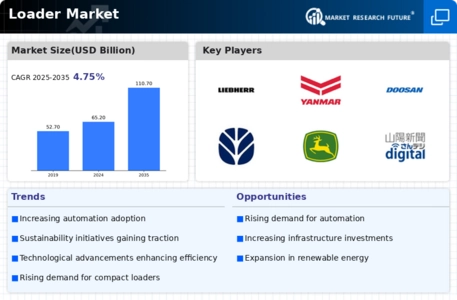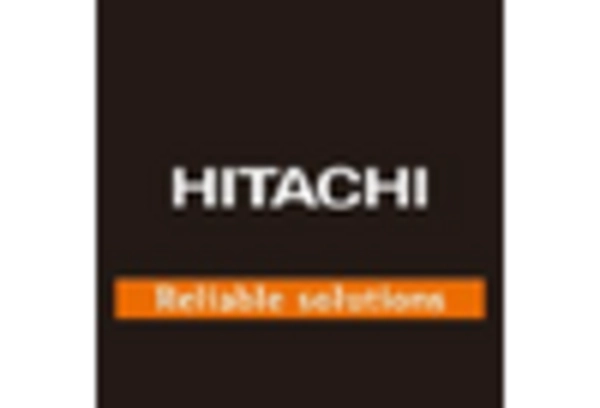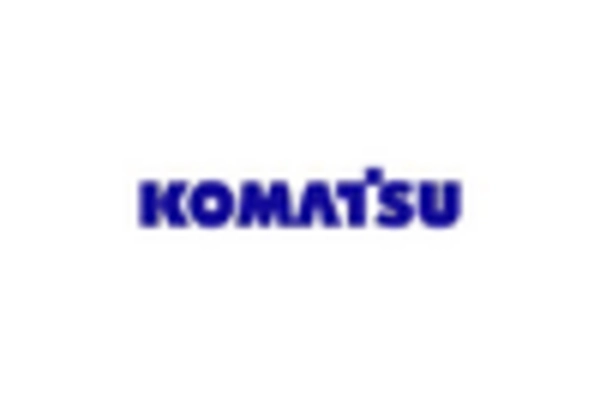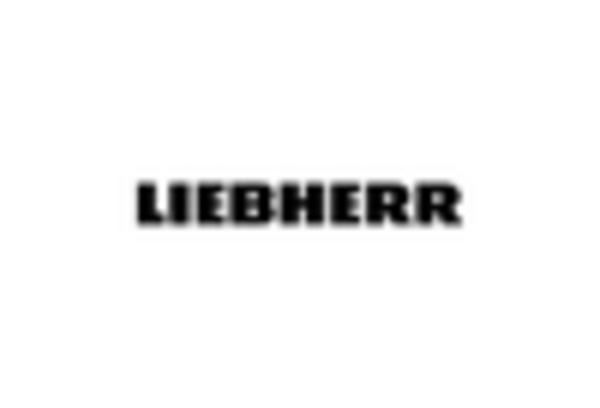Environmental Regulations
The Loader Market is adapting to stringent environmental regulations that are being implemented worldwide. Governments are enforcing laws aimed at reducing emissions and promoting sustainable practices in construction and agriculture. As a result, manufacturers are developing loaders that comply with these regulations, often incorporating eco-friendly technologies. The market for electric and hybrid loaders is anticipated to grow, as companies seek to minimize their carbon footprint. This shift not only aligns with regulatory requirements but also meets the increasing consumer demand for sustainable solutions. Thus, the Loader Market is likely to evolve in response to these environmental considerations.
Technological Innovations
Technological advancements are reshaping the Loader Market, with manufacturers increasingly integrating automation and smart technologies into their equipment. Innovations such as telematics, which allows for real-time monitoring of loader performance, are becoming standard features. This shift not only enhances operational efficiency but also reduces downtime and maintenance costs. The loader segment is expected to witness a compound annual growth rate of 5% over the next five years, driven by these technological improvements. As companies seek to optimize their operations, the demand for technologically advanced loaders is likely to rise, positioning the Loader Market for substantial growth.
Infrastructure Development
The Loader Market is experiencing a surge in demand due to ongoing infrastructure development projects across various regions. Governments are investing heavily in transportation networks, including roads, bridges, and railways, which necessitates the use of loaders for efficient material handling. For instance, the construction sector is projected to grow at a rate of 4.5% annually, driving the need for advanced loader machinery. This trend is further supported by urbanization, as cities expand and require robust infrastructure to support growing populations. Consequently, the Loader Market is likely to benefit from these investments, as loaders play a crucial role in construction and maintenance activities.
Rising Demand in Agriculture
The Loader Market is significantly influenced by the agricultural sector, where loaders are essential for various tasks such as loading, transporting, and unloading materials. With the increasing focus on food production to meet the demands of a growing population, the agricultural sector is expanding. Reports indicate that agricultural machinery sales, including loaders, are expected to grow by 6% annually. This trend is driven by the need for efficient farming practices and the adoption of modern equipment. As farmers seek to enhance productivity, the Loader Market is poised to benefit from this rising demand, particularly in regions with strong agricultural outputs.
Economic Growth and Investment
Economic growth in various sectors is a key driver for the Loader Market. As economies expand, there is a corresponding increase in construction and industrial activities, which directly boosts the demand for loaders. Investment in infrastructure and industrial projects is expected to rise, with estimates suggesting a growth rate of 3.5% in capital expenditures over the next few years. This trend indicates that companies are likely to invest in new loader equipment to enhance productivity and efficiency. Consequently, the Loader Market stands to gain from this economic momentum, as businesses seek to capitalize on growth opportunities.


















Leave a Comment